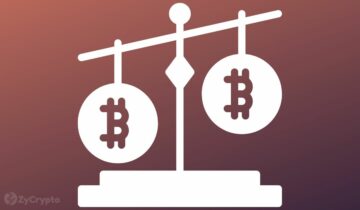
- High gas fees have plagued the Ethereum network in recent times.
- Buterin has proposed a multidimensional EIP-1559 to solve the problem.
- He has also revealed a roadmap for the network going forward in recent days.
Ethereum co-founder Vitalik Buterin has proposed a new solution to solve Ethereum’s gas fee issues. Buterin made these propositions in a post on the network’s research platform.
Buterin Proposes Multidimensional EIP-1559
The Ethereum Network has been plagued by jaw-dropping gas fees in the last couple of years, which have made transactions on the network quite expensive. Buterin, the network’s co-founder has now put forward a proposal to tackle this issue that has locked certain people and indeed even DeFi projects off the network. Buterin proposes to tackle the spike in gas fees through a multidimensional EIP-1559 pricing model.
The plan will limit how much of a particular resource a single block can consume with a base fee for each resource, thereby optimizing the gas fee. To this end, the programmer suggested two options.
In the first option, which he terms “less pure,” blocks maintain the limits they currently have while the costs of “special resources” are limited to a fraction of a set base fee.
“We keep gas costs of execution fixed, and we keep the current EIP 1559; let f1 be the base fee. The gas prices of all “special” resources (calldata, storage use…) become fi/f1 . Blocks have both the current gas limit and the limit b1…bn on each resource. Priority fee works in the same way as today,” wrote Buterin.
Buterin admits that the second option is the more difficult undertaking, but says it is “more pure”. In this proposition, blocks do not have gas limits, but only limits on resource usage with a base fee that is a minuscule fraction of ether.
“The gas basefee is fixed to 1 wei (or if we want, 1 gwei). The gas price of using each resource (of which execution is one) becomes fi. There is no block gas limit; there are only the limits b1…bn on each resource. In this model, “gas” and “ETH” become truly synonymous. Priority fee works by specifying a percentage; priority fees paid to the block producer equal base fees times that percentage (an even more advanced approach would be to specify a vector of n priority fees, one per resource).”
It should be noted that the CEO of fund managers, Three Arrows Capital, Su Zhu, had come out last year to say he was leaving the Ethereum community because of these high gas fees, which he felt kept away people that wanted to engage in the market. Su Zhu’s firm also invested a lot in AVAX, an Ethereum competitor, within the year.
ETH 2.0 And Ethereum’s Roadmap
The Ethereum CEO has been active in recent weeks. In a podcast a couple of days ago, he revealed his plans for the network as it transitions to the proof-of-stake system.
He outlined a five-step process: merge, surge, verge, purge, and splurge, which he expects will take six years to complete and see the network run at maximum optimization. Buterin said the end goal for the network was to “leave the past in the past and create an Ethereum that actually becomes simpler and simpler over time.”
- "
- 000
- active
- All
- Bitfinex
- blockchain
- Buterin
- capital
- Catch
- ceo
- Co-founder
- community
- consume
- Costs
- Couple
- Current
- DeFi
- Ether
- ethereum
- ethereum network
- expects
- Fees
- Fire
- Firm
- First
- Forward
- fund
- GAS
- gas fees
- High
- How
- HTTPS
- issues
- IT
- Limited
- Market
- million
- model
- network
- Option
- Options
- People
- platform
- podcast
- price
- pricing
- producer
- projects
- Proof-of-Stake
- proposal
- research
- resource
- Resources
- Revealed
- Run
- set
- SIX
- SOLVE
- storage
- surge
- system
- time
- transaction
- Transactions
- vitalik
- vitalik buterin
- within
- works
- year
- years












